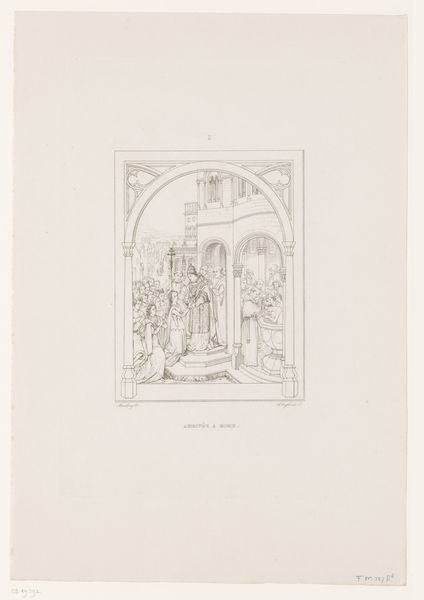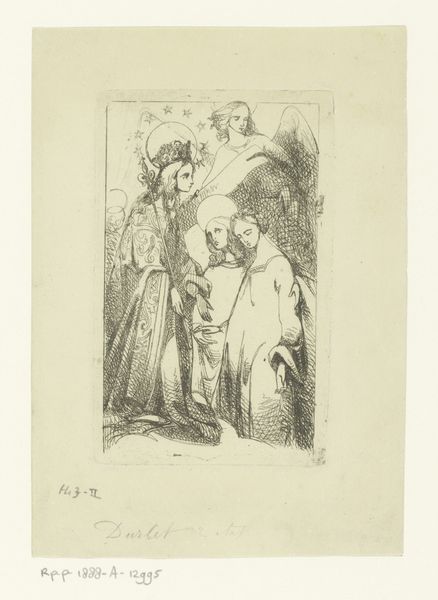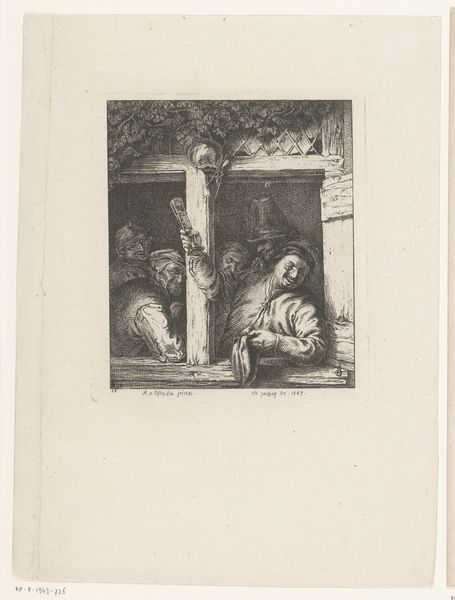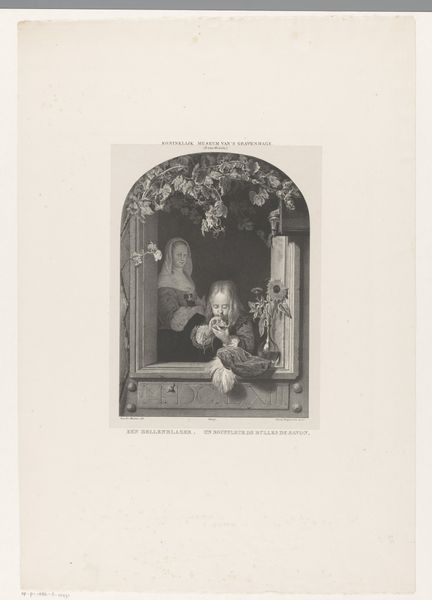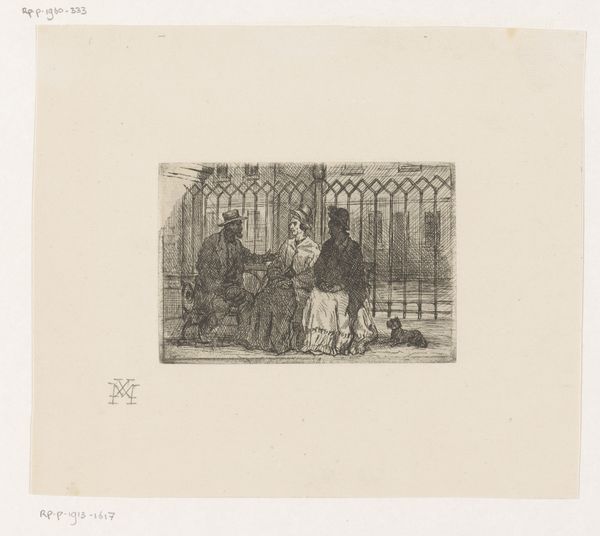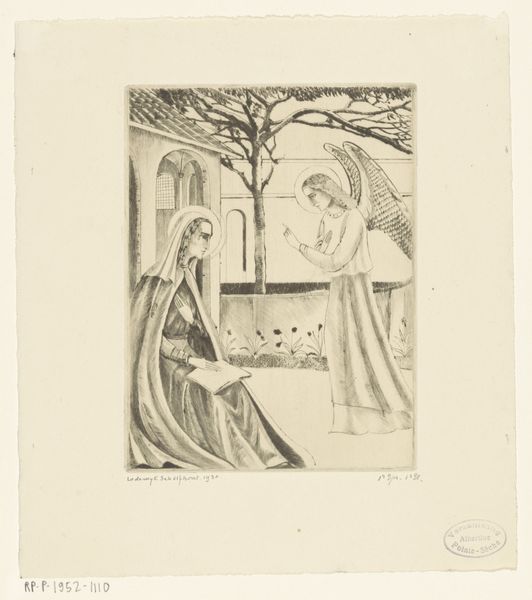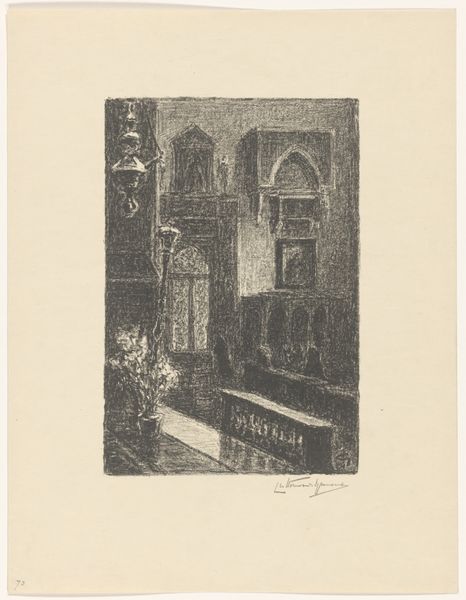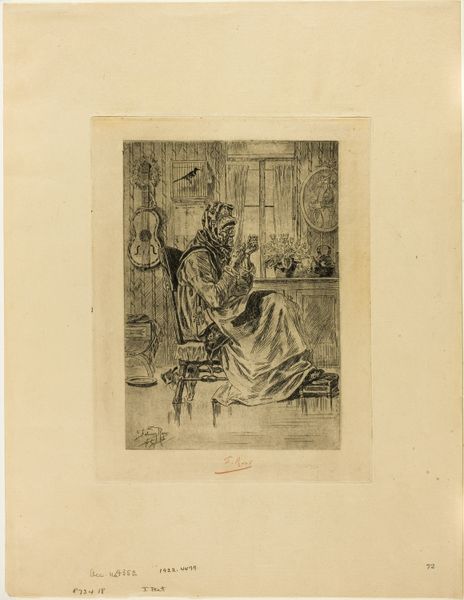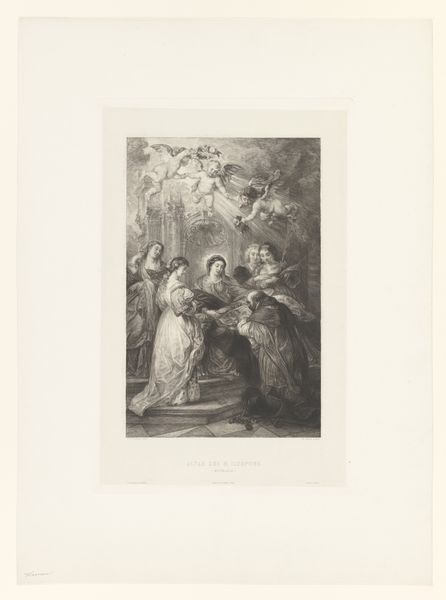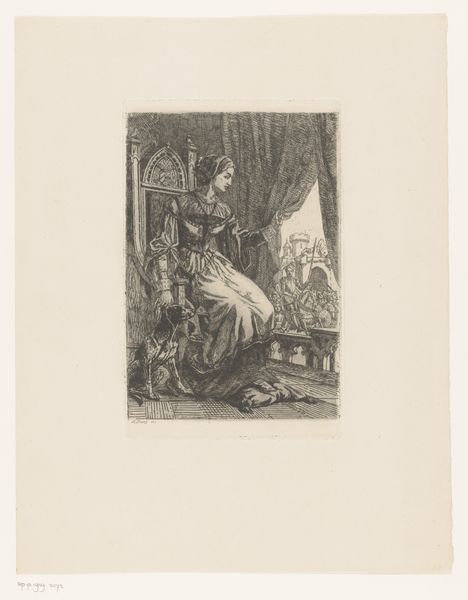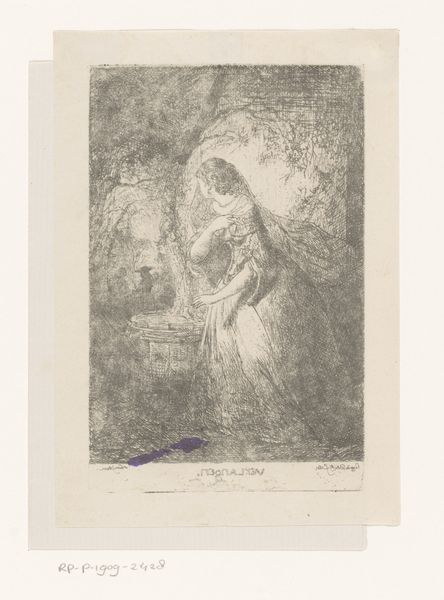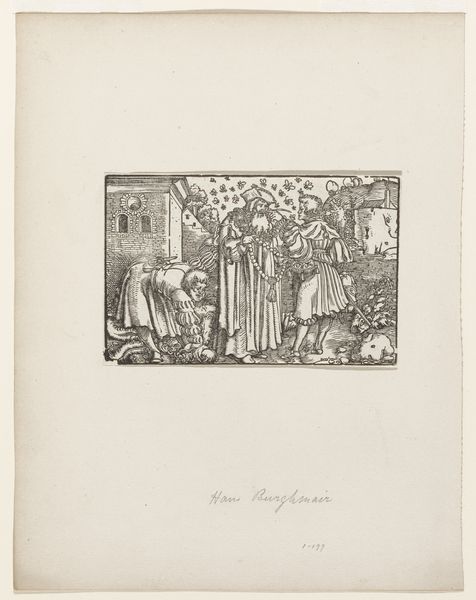
print, paper, ink, engraving
#
narrative-art
#
ink paper printed
# print
#
figuration
#
paper
#
ink
#
italian-renaissance
#
engraving
Dimensions: height 265 mm, width 208 mm
Copyright: Rijks Museum: Open Domain
Curator: Here we have a print called "Heilige Familie met Anna," or "Holy Family with Anna," made sometime between 1864 and 1923 by Peter von Halm. It’s an engraving on paper, currently held in the Rijksmuseum collection. What are your first thoughts? Editor: The composition is striking. The sharp lines of the engraving create a strong contrast, almost a sense of harshness despite the ostensibly tender subject. Curator: The artwork definitely participates in a well-worn visual tradition of its time. Halm lived through the unification of Germany. Religious imagery gained renewed currency amidst these cultural shifts, often promoting a kind of moral rectitude in the face of rapid industrialisation and social upheaval. Editor: Absolutely, the piece resonates with a longing for a return to more traditional forms. Structurally, I'm intrigued by how the halos intersect with the architecture behind them; it blurs the lines between the sacred figures and the spaces they inhabit. Curator: The choice of depicting the Holy Family also has resonance with the rise of bourgeois family values in that period, which were held up as ideals of social order. Editor: The figures have very idealized facial features. However, they come across as almost emotionless, as if they're just figures acting out a play, wouldn’t you agree? Curator: That perceived emotionlessness, if that’s what it is, I believe it fits perfectly with the rigid expectations and the social performativity demanded in the era of its making. Editor: I do see your point about the engraving and the choice of medium reinforcing a certain historical traditionalism in art production. Curator: It brings depth to what may first appear as a straightforward, devotional scene. Thank you! Editor: Yes, thank you for sharing your insights as well! It's given me much to consider in regard to how to interpret this print.
Comments
No comments
Be the first to comment and join the conversation on the ultimate creative platform.
